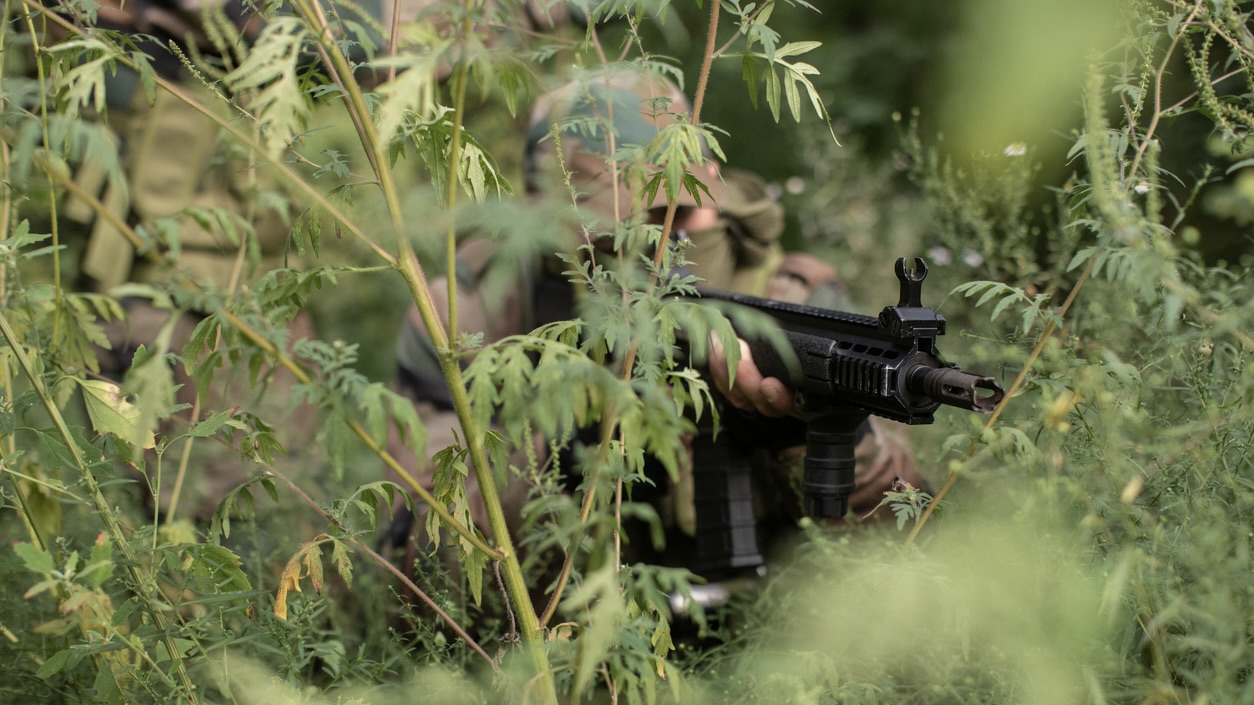The Centre has set 31 March 2026 as the deadline to “eliminate” Naxalism. According to the report, the area under Maoist influence has shrunk from 18,000 square kilometres in 2014 to 4,200 square kilometres.
Published May 19, 2025 | 8:15 PM ⚊ Updated May 19, 2025 | 8:15 PM

The number of districts affected by Maoist violence has fallen from 126 in 2018 to 38 in April 2024.
Synopsis: The Union government, with his stated goal of eliminating naxalism by 2026. has hailed the killing of 31 Maoists during a recent operation in Karreguttalu Hill region along along the Chhattisgarh-Telangana border as one of the biggest anti-Naxal successes in the country’s history. The report claims a significant decline in Maoist influence, citing an 81 percent drop in violent incidents and a sharp reduction in affected districts over the past decade. It attributes these gains to a combined approach of robust security operations, development initiatives, and community engagement.
The Union government has described the killing of 31 Maoists, including 16 women, in Karreguttalu Hill region along along the Chhattisgarh-Telangana border as “one of the biggest anti-Naxal operations in the country’s history” in a Press Information Bureau report titled Breaking the Red Grip: India’s Triumph Over Left Wing Extremism, released on 17 May.
The joint operation, dubbed Operation Kagar, was conducted from 21 April to 11 May by the Central Reserve Police Force (CRPF), Special Task Force (STF), District Reserve Guard (DRG), and state police, reported no casualties among security personnel.
The area, long held by Maoist insurgents, has since seen the establishment of new security camps following the operation.
The report also highlights follow-up successes in Chhattisgarh’s Bijapur district, where Commando Battalion for Resolute Action (CoBRA) commandos and state police arrested 22 Maoists and seized weapons and explosives.
In neighbouring Sukma district, 33 Maoists surrendered. Eleven of them did so in Badesetti panchayat, which the report called the “first Naxal-free panchayat” in the region.
“These developments underscore the effectiveness of the government’s surrender policy and coordinated security efforts,” the report said.
The Centre has set 31 March 2026 as the deadline to “eliminate” Naxalism.
According to the report, the area under Maoist influence has shrunk from 18,000 square kilometres in 2014 to 4,200 square kilometres. Violent incidents have halved in the past decade.
The government says the insurgency has been pushed to the margins by “a combination of robust security measures, development initiatives, and community engagement.”
The report recalls Prime Minister Narendra Modi’s emphasis on the government’s approach:
“It is true that Maoist violence had stalled the progress of many districts in central and eastern India. That is why in 2015, our government formulated a comprehensive ‘National Policy and Action Plan’ to eradicate Maoist violence.”
The document presents detailed statistics on the decline of Left Wing Extremism (LWE) across the country over the past decade.
Reported incidents dropped from 1,936 in 2010 to 374 in 2024 – a fall of 81 percent. Deaths (of both civilians and security forces) fell from 1,005 to 150, an 85 percent drop over the same period.
The number of districts affected by Maoist violence has fallen from 126 in 2018 to 38 in April 2024.
Of these, only six remain classified as “most affected”: Bijapur, Kanker, Narayanpur, and Sukma in Chhattisgarh; West Singhbhum in Jharkhand; and Gadchiroli in Maharashtra.
State-wise, Chhattisgarh bore the brunt with 267 LWE-related fatalities in 2024; Jharkhand reported 69 and Maharashtra 10. Madhya Pradesh saw 11 deaths, Odisha 6, Telangana 8, Bihar 2 and Andhra Pradesh 1.
Kerala recorded zero fatalities in 2024 (down from four in 2023), and West Bengal likewise reported none.
The strategy pairs a hard security approach with long-term investments in infrastructure, welfare, and social inclusion.
Since 2019, 280 new security camps, 15 Joint Task Forces, and six Central Reserve Police Force (CRPF) battalions have been deployed.
The National Investigation Agency (NIA) has been tasked with tracking Maoist finances under the Prevention of Money Laundering Act (PMLA), resulting in crores rupees worth of seizures.
The Centre has heavily invested in physical and digital infrastructure in Maoist-affected regions.
A total of 17,589 kilometres of roads have been sanctioned under the Road Requirement Plan-I (RRP-I) and the Road Connectivity Project for Left Wing Extremism (RCPLWE) areas, of which 14,618 kilometres have already been constructed.
Telecom access is being expanded, with 7,768 of the planned 10,505 mobile towers now commissioned. Full coverage is expected by 1 December 2025.
Over 1,007 bank branches, 937 automated teller machines (ATMs), and 5,731 post offices have been opened in LWE-affected districts since 2015.
To support education and employment, 48 Industrial Training Institutes (ITIs), 61 Skill Development Centres (SDCs), and 178 Eklavya Model Residential Schools (EMRSs) have also been established.
Under the Special Central Assistance (SCA) scheme, the most-affected districts receive ₹30 crore annually, while “Districts of Concern” receive ₹10 crore.
Since 2017, the Centre has released ₹3,563 crore under SCA and sanctioned ₹1,741 crore under the Special Infrastructure Scheme (SIS) to boost policing and intelligence. A total of 612 fortified police stations have been built, compared to just 66 in 2014.
Community engagement through the Civic Action Programme (CAP) has seen ₹196.23 crore spent since 2014 on welfare and confidence-building efforts. Over 8,000 Maoists have surrendered in the past decade – 1,045 of them in 2023 alone.
One of the flagship schemes, Dharti Aaba Janjatiya Gram Utkarsh Abhiyan, was launched on 2 October 2024 by the Prime Minister.
It aims to bring basic amenities to 1.5 crore tribal people across 15,000 villages in Maoist-hit regions.
(Edited by Dese Gowda)
